Among the sprawling savannahs of the Masai Mara in Kenya, a tiny, mischievous creature can often be spotted darting through the trees with unmatched agility. Enter the world of the Vervet Monkey, a captivating resident of this mesmerizing wilderness where wildlife thrives and legends are born. With its vibrant coat of fur and lively demeanor, this intelligence-driven primate holds a significant place in the hearts of locals and visitors alike. As we delve into the enchanting tales surrounding the Vervet Monkey in Masai Mara, we uncover a world where curiosity meets caution, and the balance of nature’s tapestry intertwines with humanity’s fascination. Join us on a journey into the captivating realm of the Vervet Monkey, where the boundaries between reality and the extraordinary blur, leaving us in awe of nature’s wonders.
Table of Contents
- Vervet Monkey: The Mischievous Primate of Masai Mara National Park
- The Behavior and Social Structure of Vervet Monkeys in Masai Mara National Park
- Contribution of Vervet Monkeys to the Ecosystem of Masai Mara National Park
- Preserving Vervet Monkey Habitat: Strategies for Sustainable Conservation
- Coexistence with Vervet Monkeys in Masai Mara National Park
- Observing Vervet Monkeys: Tips for a Memorable Wildlife Experience
- Q&A
- Insights and Conclusions
Vervet Monkey: The Mischievous Primate of Masai Mara National Park
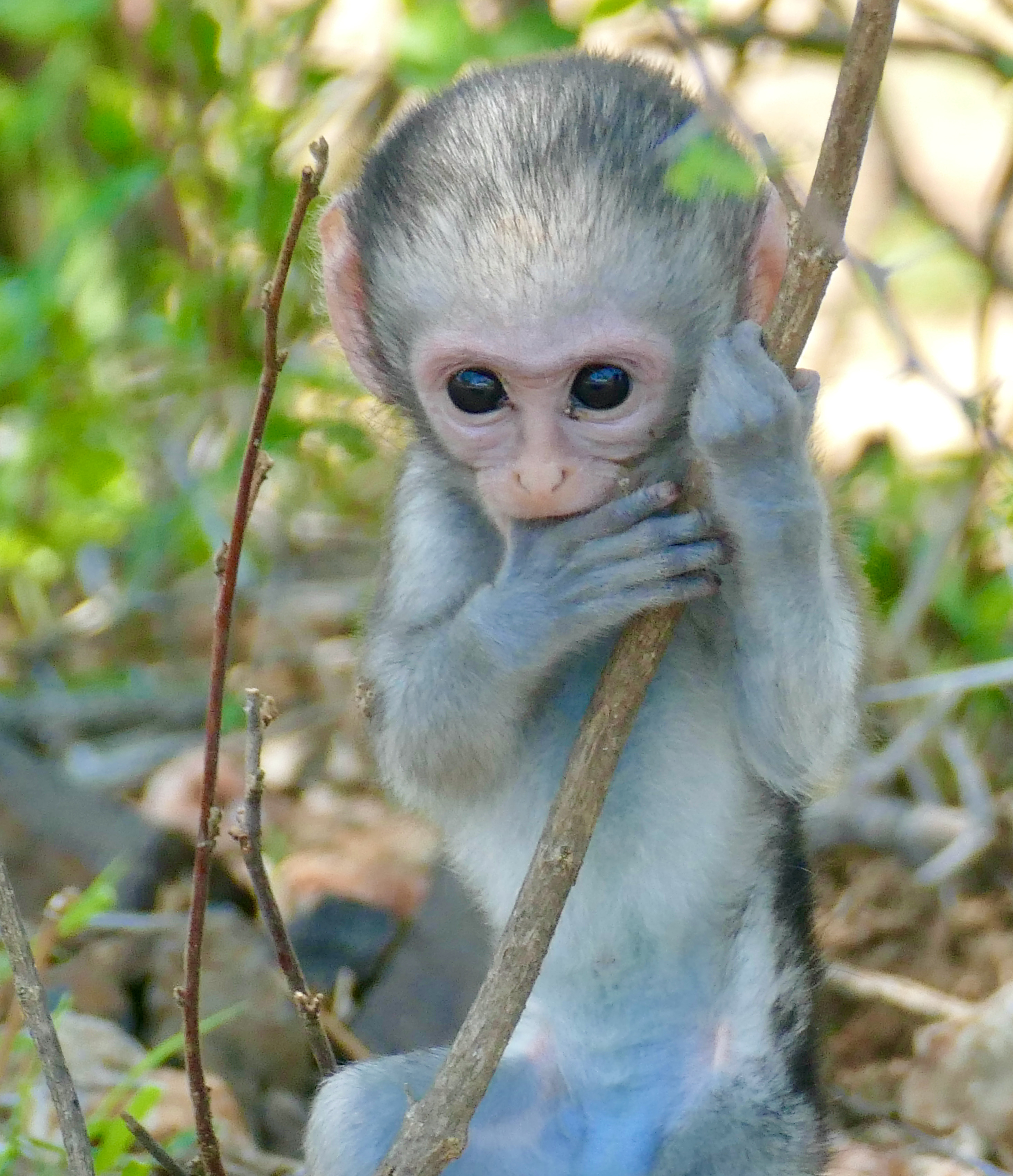

The Masai Mara National Park in Kenya is home to a remarkable variety of wildlife, and one of its most mischievous inhabitants is the Vervet Monkey. With their vibrant blue faces, slender bodies, and long tails, these playful creatures are not only a joy to encounter but also hold a special place in the ecosystem of the park.
The Vervet Monkeys of Masai Mara National Park exhibit fascinating social behavior, living in large troops that can consist of up to 50 individuals. These troops are hierarchical, with dominant males overseeing their group’s activities and protecting them against potential dangers. Within the troop, members communicate through intricate vocalizations, using different calls to alert others to the presence of predators or to inform them about food sources.
The diet of Vervet Monkeys is incredibly diverse, consisting of fruits, seeds, leaves, and sometimes even insects. Their ability to adapt to new foods has allowed them to thrive in various habitats within the park, making them a common sighting for visitors.
As for their mischievous reputation, Vervet Monkeys are known for their curious nature and their knack for raiding picnic baskets or even trying to snatch food directly from unsuspecting tourists. They possess remarkable dexterity, using their nimble hands to open containers and inspect their contents, often frustrating the efforts of visitors trying to protect their meals.
For those lucky enough to witness the antics of the Vervet Monkey, their entertaining behaviors provide a memorable experience within the breathtaking landscapes of Masai Mara National Park. Just remember to keep a safe distance and secure your belongings, as these clever primates are always on the lookout for their next adventurous pursuit.
The Behavior and Social Structure of Vervet Monkeys in Masai Mara National Park
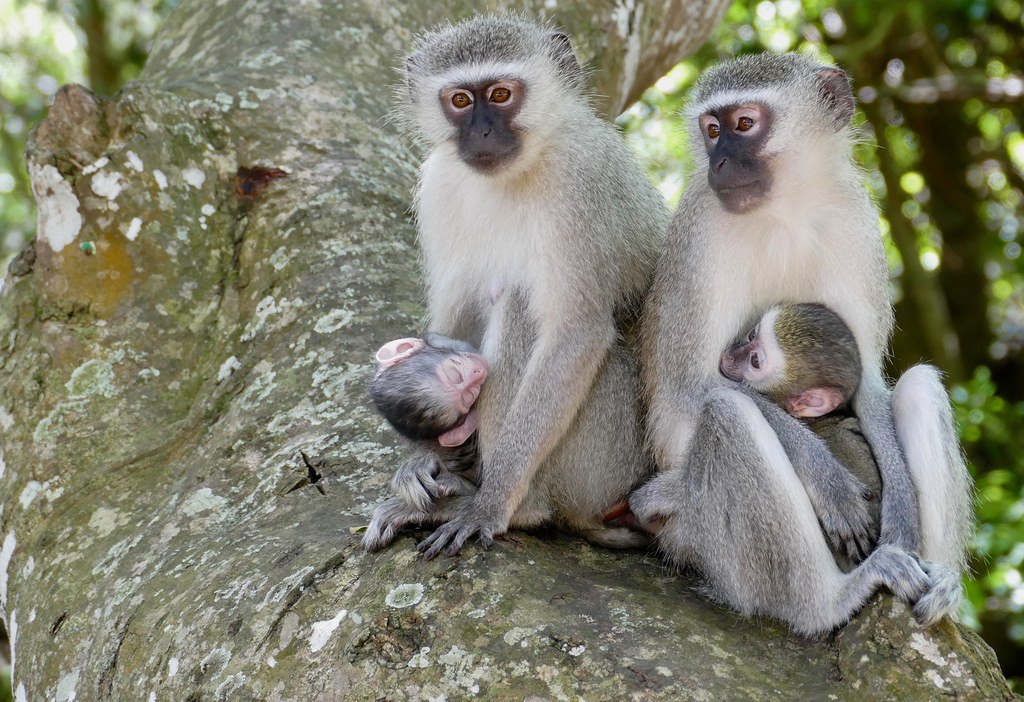
Vervet monkeys are one of the most fascinating creatures you can encounter in Masai Mara National Park. These highly social primates have developed a unique behavior and social structure that distinguishes them from other monkey species.
One of the most intriguing aspects of the vervet monkey’s behavior is their intricate social hierarchy. Within a troop, dominant males hold the highest rank and have access to the best resources and the most desirable mates. Subordinate males, on the other hand, must navigate their way through the social ladder and challenge the current alpha male to gain higher status.
Despite this hierarchical structure, vervet monkeys also display a strong sense of cooperation and teamwork. They live in close-knit groups, where individuals look out for one another and work together for the common good. They communicate through a broad range of vocalizations, including alarm calls that warn the troop of approaching predators. This quick and effective communication system helps ensure the safety and survival of the entire group.
Furthermore, vervet monkeys are highly adaptable and skilled foragers. They have mastered the art of problem-solving, using their dexterous hands and sharp intellect to find food in various habitats. Their diet mainly consists of fruits, leaves, seeds, and even small insects. This diverse diet allows them to thrive in Masai Mara National Park, even during times of scarcity.
Overall, encountering vervet monkeys in Masai Mara National Park provides a unique opportunity to witness their captivating behavior and understand their complex social structure. These intelligent primates offer a glimpse into the fascinating dynamics of wildlife in this incredible ecosystem.
Contribution of Vervet Monkeys to the Ecosystem of Masai Mara National Park
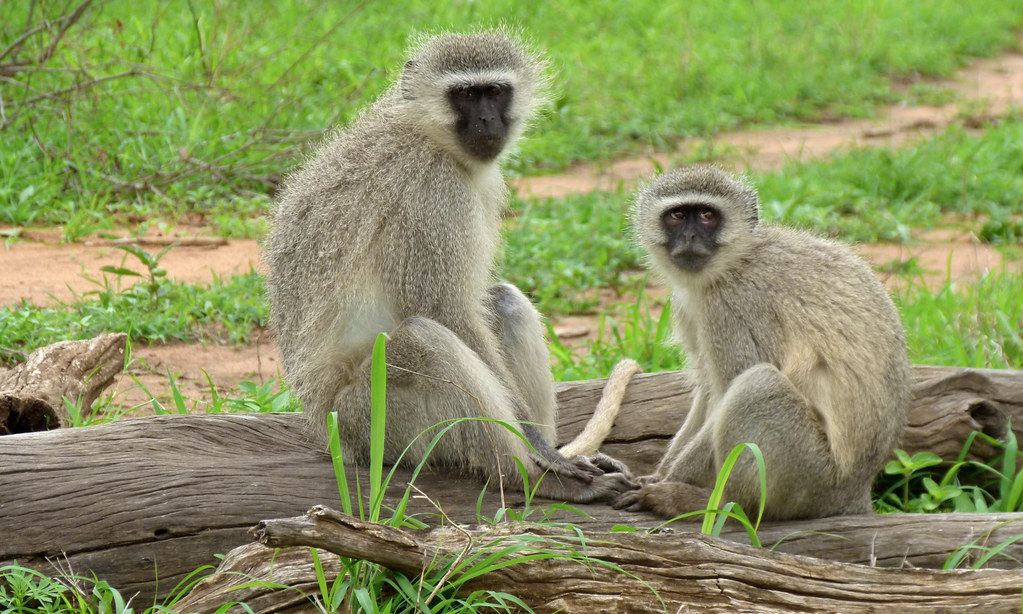
Vervet monkeys, also known as Chlorocebus pygerythrus, play a vital role in the rich and diverse ecosystem of Masai Mara National Park. These charismatic primates are not only a delight to observe, but their presence also contributes to the delicate balance of this remarkable habitat. Let’s explore some of the ways in which the vervet monkeys positively impact the ecosystem.
- Seed Dispersal: As avid fruit eaters, vervet monkeys assist in the dispersal of seeds throughout Masai Mara National Park. They serve as eco-friendly gardeners by feeding on fruits, digesting their pulpy flesh, and later excreting the undigested seeds in different locations. This process helps plant diversity and promotes the growth of various vegetation across the park.
- Predator Control: Vervet monkeys possess sharp senses and are highly adept at recognizing potential threats in their surroundings. Through their distinctive alarm calls and vigilant behavior, they warn other animals of the presence of predators, such as lions and leopards. This valuable contribution acts as an early warning system, helping protect not just the vervet monkeys, but also smaller mammals, birds, and other primates in the park.
- Socialization and Learning: Vervet monkeys live in close-knit groups, known as troops, which provide opportunities for socialization and learning within their community. Through grooming and play, the monkeys strengthen social bonds and transfer knowledge from experienced members to the younger individuals. This shared wisdom aids in survival skills development, such as foraging techniques and predator evasion, ensuring the long-term resilience of the vervet monkey population within Masai Mara National Park.
In summary, the presence of vervet monkeys in Masai Mara National Park holds great significance for the overall health and diversity of the ecosystem. From seed dispersal to predator control and socialization, these intelligent primates contribute in numerous ways, making them an integral part of this world-renowned national park.
Preserving Vervet Monkey Habitat: Strategies for Sustainable Conservation
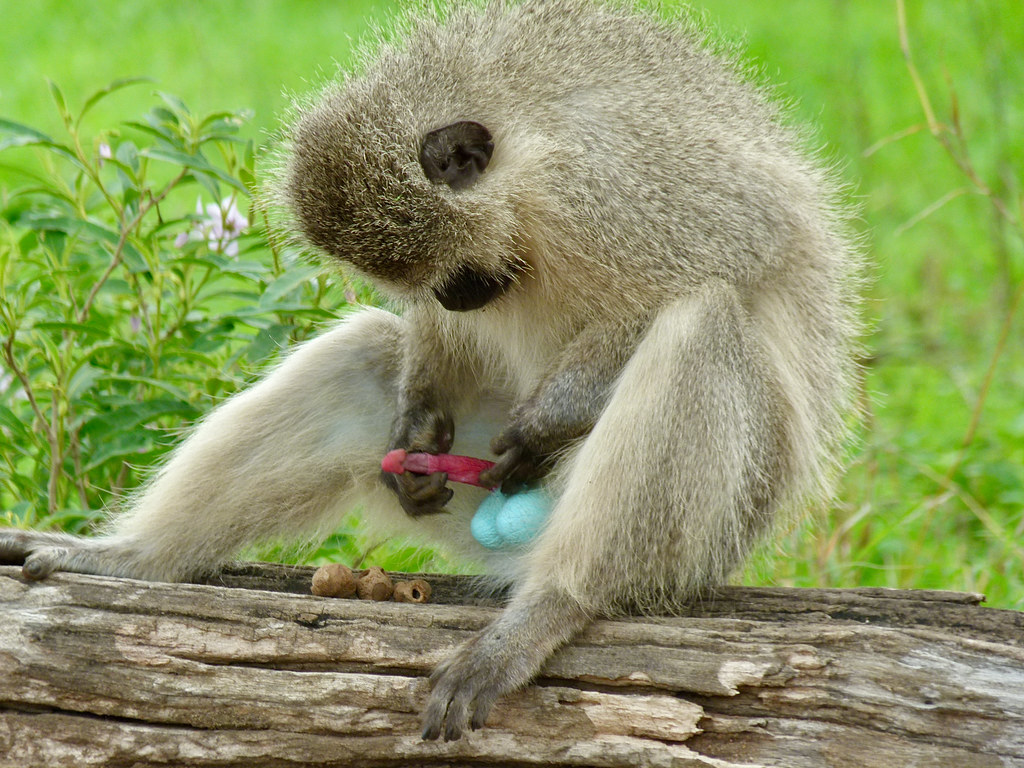
The Vervet Monkey, with its distinctive gray fur and bright blue face, is a beloved resident of the Masai Mara National Park in Kenya. However, preserving their habitat has become crucial as their population faces threats from human encroachment and climate change. To ensure the sustainable conservation of Vervet Monkey habitat in this beautiful national park, various strategies have been implemented.
1. Reforestation Initiatives: As deforestation continues to threaten the Vervet Monkey habitat, dedicated efforts are being made to restore the vegetation cover in the park. Tree-planting programs are conducted regularly, focusing on indigenous tree species that provide food and shelter for these primates. By creating a lush and diverse forest environment, these initiatives aim to boost the monkey population and sustain their habitat for generations to come.
2. Encouraging Responsible Tourism: Sustainable tourism plays a pivotal role in conserving Vervet Monkey habitat. Ecotourism operators are actively promoting responsible practices that minimize the negative impact on the environment. Guided tours and educational programs educate visitors about the importance of wildlife conservation and the intricate role of Vervet Monkeys in the ecosystem. By fostering an appreciation for these remarkable creatures, tourists become advocates for their protection and contribute to the preservation of their natural habitat.
Coexistence with Vervet Monkeys in Masai Mara National Park
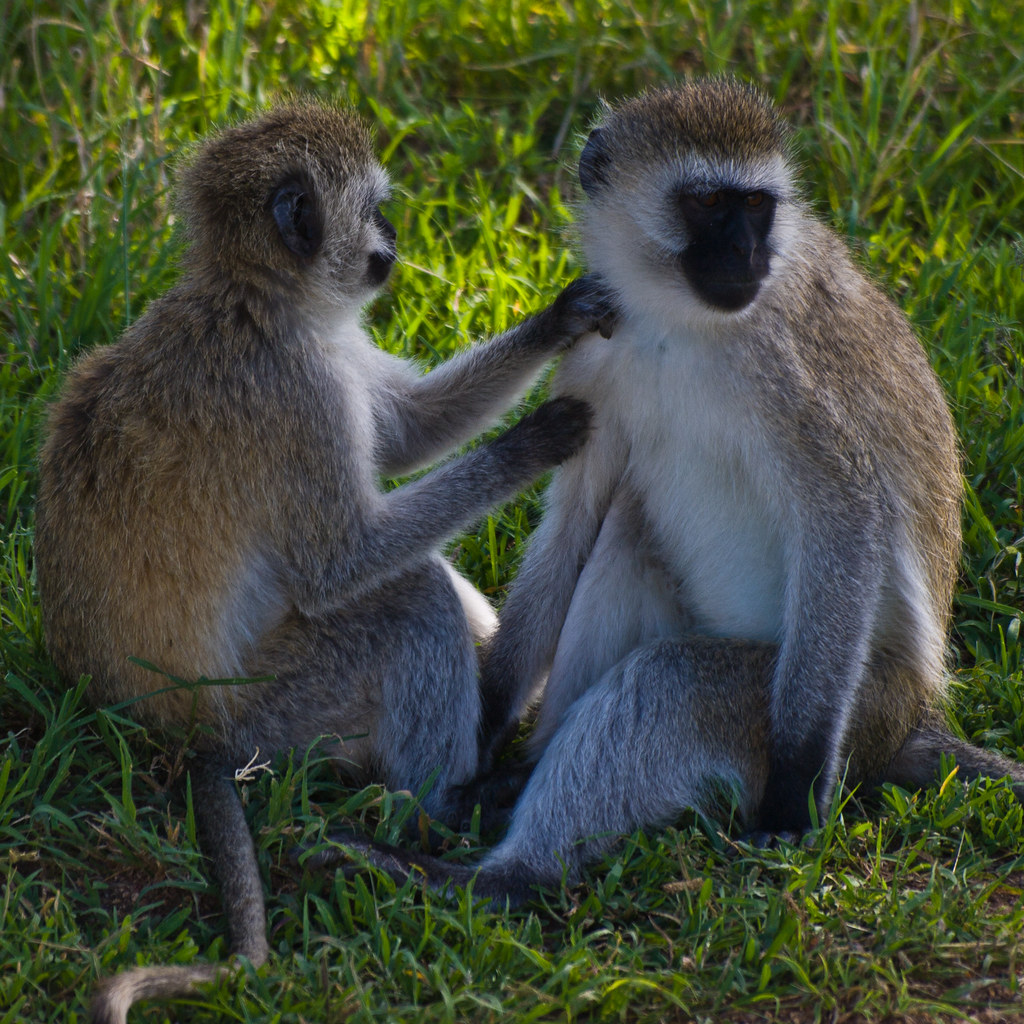
In the breathtaking wilderness of Masai Mara National Park, a fascinating species of primates thrives amidst its stunning landscapes – the Vervet Monkey. These intelligent and mischievous creatures, scientifically known as Chlorocebus pygerythrus, have found a way to coexist harmoniously with both the abundant wildlife and the local Maasai communities who call this vast savannah their home.
Embracing their natural habitat, the Vervet Monkeys swing through the acacia trees, exhibiting their dexterity with agile leaps and bounds. Their distinctive black face, grey-blue coat, and vibrant blue scrotum (of males) are not only eye-catching elements but also serve as distinguishing markers in their close-knit societies. These tight-knit troops, consisting of up to fifty individuals, encompass both genders and all ages, from newborn infants clinging to their mothers’ backs to wise elders imparting their wisdom onto the younger generations.
- The Vervet Monkeys’ diet encompasses a mix of fruits, seeds, pods, and even insects, ensuring they thrive in the Masai Mara’s diverse ecosystem.
- They possess an intricate communication system, using distinct alarm calls to warn each other of potential threats, whether it be a lurking predator or an approaching safari vehicle.
- Their exceptional problem-solving skills enable them to adapt to the ever-changing environment, as they successfully navigate the challenges posed by both natural and human influences.
Furthermore, the Vervet Monkeys have forged an unlikely alliance with the Maasai people, exemplifying the harmonious coexistence that characterizes Masai Mara National Park. The Maasai not only respect the monkeys’ presence but also observe their behaviors, drawing wisdom from these prestigious creatures. In return, the monkeys benefit from the Maasai’s extensive knowledge of the land, as the tribespeople provide protection from potential threats and offer an understanding of the interconnectedness between the park’s inhabitants.
As tourists venture into Masai Mara, they embark on unforgettable wildlife encounters. The Vervet Monkeys become a delightful highlight, entertaining visitors with their playful antics while seamlessly blending into the captivating tapestry of this vast, untamed realm. In the realm of coexistence, the Vervet Monkeys in Masai Mara National Park remind us of the delicate balance we can achieve with nature - an extraordinary feat that deserves our admiration and preservation for generations to come.
Observing Vervet Monkeys: Tips for a Memorable Wildlife Experience
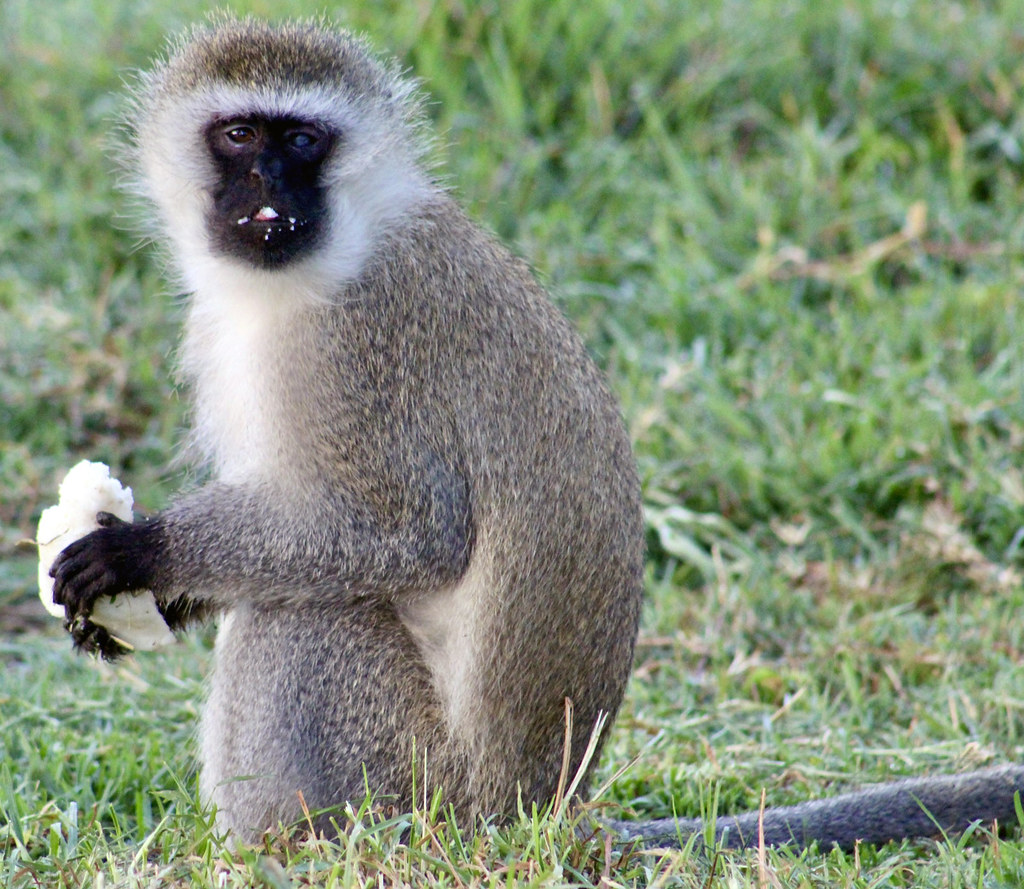
Embarking on a thrilling adventure to witness the fascinating behaviors of Vervet monkeys in the Masai Mara National Park is an experience that will stay etched in your memory forever. To ensure you make the most of this remarkable encounter, here are some invaluable tips for an unforgettable wildlife experience:
1. Keep a respectful distance: While Vervet monkeys are accustomed to the presence of visitors, it is crucial to maintain a respectful distance. Observe these mischievous creatures from a safe distance to avoid disrupting their natural behavior and territory.
2. Be patient and quiet: Vervet monkeys are incredibly active and curious, but they can also be wary of loud noises and sudden movements. Take a moment to absorb their lively antics silently, allowing their world to unfold before you. By staying patient, you’ll be rewarded with captivating displays of their social interactions and clever problem-solving abilities.
3. Watch for social cues: Vervet monkeys are highly social animals with a complex hierarchy. Keep a keen eye out for their body language, such as tail flicks and unique facial expressions, which can reveal their mood and intentions.
4. Appreciate their ecological role: While observing the Vervet monkeys’ playful nature is undoubtedly enthralling, remember to reflect on their vital ecological role. These agile primates help disperse seeds, aiding in the regeneration of the lush vegetation critical to sustaining the diverse wildlife in the Masai Mara.
Q&A
Q: Who are the Vervet Monkeys and what makes them special in Masai Mara?
A: Vervet monkeys, scientifically known as Chlorocebus pygerythrus, are a lively and captivating species found in the mesmerizing landscapes of Masai Mara. They are unique due to their distinct appearance, social behavior, and incredible adaptability.
Q: How can you identify a Vervet Monkey in Masai Mara?
A: The Vervet Monkey can be easily recognized by its striking bluish-gray fur, a black face with white markings around the eyes, and a long, slender tail. Adult males possess a charming blue scrotum that adds a splash of color to the landscape.
Q: What are the key features of their social behavior?
A: Vervet monkeys are highly social creatures, living in large troops that can consist of up to 50 individuals. Their troops are matriarchal, led by dominant females who are responsible for guiding their troop’s activities. This social structure plays a crucial role in ensuring their survival and overall success as a species.
Q: What is the significance of their adaptability?
A: Vervet monkeys are versatile and adaptable animals, excelling in various habitats found in Masai Mara. They can effortlessly move between tree-dwelling and ground-dwelling lifestyles, allowing them to exploit different food sources and evade predators depending on the circumstances. Their ability to adjust to their surroundings showcases their incredible resilience.
Q: What is their preferred diet, and how do they obtain their food?
A: Vervet monkeys have an omnivorous diet, consuming a wide range of fruits, leaves, flowers, seeds, insects, and even small vertebrates. They use their dexterous hands and nimble fingers to pluck and snatch food items, displaying exceptional coordination and skill that is both fascinating and entertaining to observe.
Q: Do Vervet monkeys face any threats or challenges?
A: Like many wildlife species, Vervet monkeys are not exempt from threats. They are exposed to predation from larger carnivores such as leopards, African wild dogs, and larger bird species. Additionally, habitat loss due to human encroachment and fragmentation poses challenges for their continued existence.
Q: Are there any conservation efforts in place to protect these monkeys?
A: Yes, several conservation initiatives are committed to preserving Vervet monkeys and their habitats in Masai Mara. These include community-based projects providing education and generating awareness about the importance of conserving these incredible creatures. Additionally, measures are being taken to reduce human-wildlife conflict and promote sustainable tourism practices.
Q: Can tourists observe Vervet monkeys during their visit to Masai Mara?
A: Absolutely! Tourists visiting Masai Mara have the extraordinary opportunity to come face to face with Vervet monkeys. Whether it’s witnessing their playful antics or observing their social interactions, seeing these charismatic creatures up close is a delight for wildlife enthusiasts and photographers alike.
Q: What should visitors keep in mind while encountering Vervet monkeys?
A: It is vital to remember that Vervet monkeys are wild animals and should be observed from a respectful distance. Feeding them or any wildlife is strictly discouraged as it disrupts their natural behavior and can lead to dependence on human food, which is detrimental to their health and overall survival. Admire them from afar to ensure their well-being.
Q: How can individuals contribute to the conservation of Vervet monkeys?
A: Individuals can contribute to the conservation of Vervet monkeys by supporting local conservation organizations through donations or voluntary work. Respecting their habitat and spreading awareness about their importance within the ecosystem are also meaningful ways to ensure their long-term survival. Together, we can help protect these incredible creatures for generations to come.
Insights and Conclusions
As we bid farewell to the mesmerizing world of vervet monkeys, it is impossible not to feel a twinge of admiration for these remarkable creatures. From their enchanting social structures to the effortless acrobatics they display, vervet monkeys have proven themselves to be masters of adaptation in their vibrant African habitat.
In our exploration, we have uncovered the intricate communication intertwined within their daily lives, as they chatter away in an ancient language known only to their tribe. We have marveled at their mischievous nature, as they swing effortlessly from branch to branch, always hungry for adventure. And we have witnessed their remarkable problem-solving skills, highlighting their intellect in ways that often leave us awestruck.
Yet, amidst all the marvels and wonders of these captivating primates, it is essential to remember the delicate balance required for their survival. As human activity encroaches upon their natural habitat, we are reminded of the responsibility we bear in preserving not just the vervet monkeys but all the precious inhabitants of this magnificent planet.
Ultimately, our encounter with the vervet monkey has been a window into a world both familiar and foreign, a glimpse into the extraordinary realm of nature that surrounds us. Let us carry the lessons learned from these spirited creatures with us, as we venture forth into the unknown, forever cherishing the remarkable tapestry of life that we share with them.
So, as we conclude our mesmerizing journey through the lives of vervet monkeys, let us once again marvel at their captivating existence and vow to protect, nurture, and appreciate the beauty of our natural world. For in doing so, we ensure the legacy of these enchanting creatures lives on, inspiring generations to come with their unwavering spirit and resilience.




